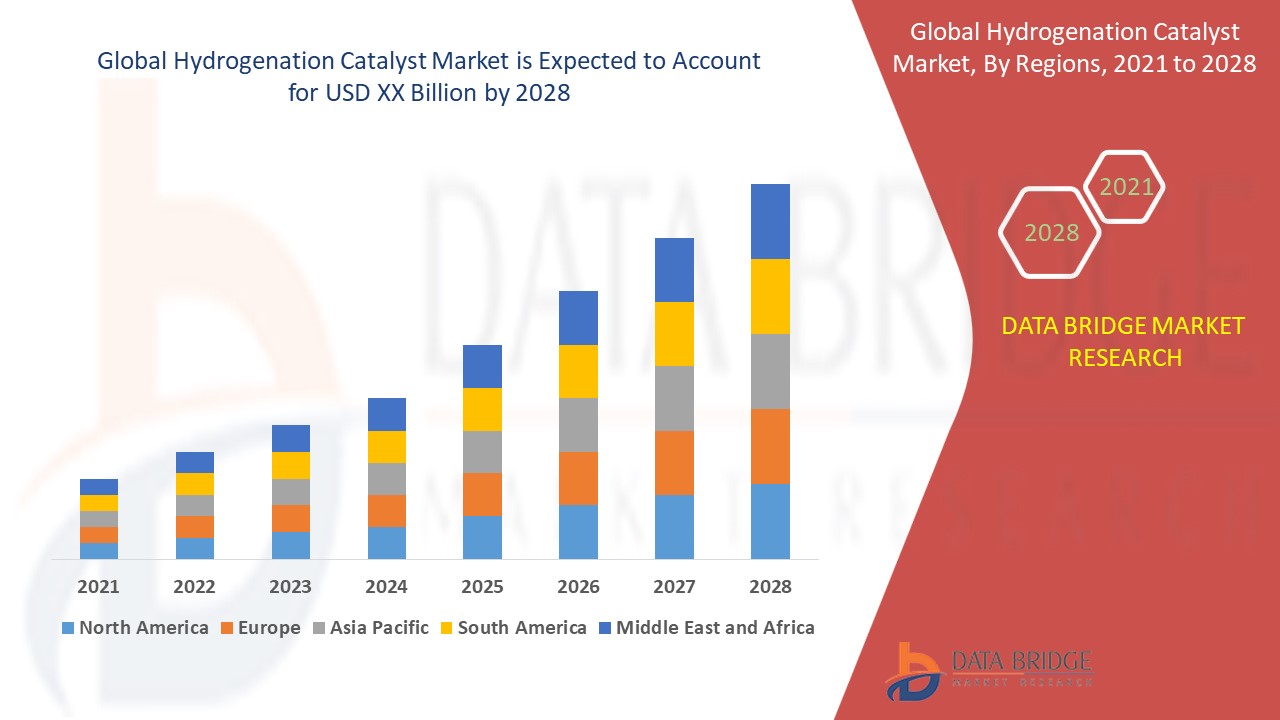
Hydrogenation Catalyst Market Opportunities | Emerging Trends and Strategic Forecast 2025 - 2032
The Hydrogenation Catalyst Market is entering a transformative phase, with forecasts predicting strong growth and groundbreaking innovations by 2032. Driven by rising demand, digital adoption, and evolving consumer needs, the industry is rapidly expanding across global markets. A recent report highlights key drivers such as increasing market share, advanced segmentation, and the growing influence of tech-enabled solutions.
Backed by tools like SWOT and PESTEL analysis, the study explores economic, regulatory, and technological forces shaping the market’s future. With platforms like NUCLEUS Connected Intelligence offering real-time insights and data-driven strategies, businesses and investors are better equipped to navigate challenges, seize new opportunities, and gain a competitive edge in this evolving landscape.
DataBridge Market Research has newly launched the NUCLEUS Platform, a Cloud-Connected Intelligence Platform that allows users to analyze and integrate macro and micro-level data seamlessly. This revolutionary tool bridges the gap between data analytics, market research, and strategy, providing businesses with a fully automated, Interactive Dashboard with Real Time Updates throughout the Year to drive profound growth and revenue impact.

What is the projected market size & growth rate of the Hydrogenation Catalyst Market?
Market Analysis and Insights
Hydrogenation catalyst market is expected to grow at a compound annual growth rate of 4.10% for the forecast period of 2021 to 2028. Data Bridge Market Research report on hydrogenation catalyst market provides analysis and insights regarding the various factors expected to be prevalent throughout the forecasted period while providing their impacts on the market’s growth.
Hydrogenation is a basic reaction in which water is added across a double or triple bond, and is broadly used in the laboratory and in industry applications. This reaction usually requires a metal catalyst to ensue, under which it is known as catalytic reduction or hydrogenation catalyst.
The increasing demand for catalysts from applications counting petroleum refining, chemical synthesis, polymers and petrochemicals and environmental has highly influenced growth of the hydrogenation catalyst market. In line with this, the rapidly shifting energy trends towards alternative fuels such as biodiesel and shale gas fuel have propelled the demand for catalysts is also acting as a key determinant favoring the growth of the hydrogenation catalyst market over the forecast period of 2021 to 2028. Also the rapid increase in application of hydrogenation process in the manufacturing of aroma chemicals and medicines are also positively impacting the growth of the hydrogenation catalyst market. The major factor accountable for the growth of the market is the rapid advances in manufacturing processes concerned in the hydrogenation reactions.
However, the advancement in chemical synthesis which reduces catalyst consumption as well as the dearth of scientific training on the multidisciplinary nature of studies in the hydrogenation catalysts may act as key restraint towards hydrogenation catalyst market growth rate in the forecast period of 2021 to 2028, whereas the exposed nature of prices of raw materials for production of catalysts have the potential to challenge the growth of the hydrogenation catalyst market in the above mentioned forecast period.
Furthermore, rapid development and growing usage of hydrogenation catalyst in the production of various commercial chemicals such as agrochemicals, flavors, pharmaceuticals, fine chemicals, fragrances and dietary supplements will further offer a variety of growth opportunities for the hydrogenation catalyst market in the above mentioned forecast period.
This hydrogenation catalyst market report provides details of new recent developments, trade regulations, import export analysis, production analysis, value chain optimization, market share, impact of domestic and localized market players, analyses opportunities in terms of emerging revenue pockets, changes in market regulations, strategic market growth analysis, market size, category market growths, application niches and dominance, product approvals, product launches, geographical expansions, technological innovations in the market. To gain more info on hydrogenation catalyst market contact Data Bridge Market Research for an Analyst Brief, our team will help you take an informed market decision to achieve market growth.
Browse Detailed TOC, Tables and Figures with Charts which is spread across 350 Pages that provides exclusive data, information, vital statistics, trends, and competitive landscape details in this niche sector.
This research report is the result of an extensive primary and secondary research effort into the Hydrogenation Catalyst market. It provides a thorough overview of the market's current and future objectives, along with a competitive analysis of the industry, broken down by application, type and regional trends. It also provides a dashboard overview of the past and present performance of leading companies. A variety of methodologies and analyses are used in the research to ensure accurate and comprehensive information about the Hydrogenation Catalyst Market.
Get a Sample PDF of Report - https://www.databridgemarketresearch.com/request-a-sample/?dbmr=global-hydrogenation-catalyst-market
Which are the driving factors of the Hydrogenation Catalyst market?
The driving factors of the Hydrogenation Catalyst market include technological advancements that enhance product efficiency and user experience, increasing consumer demand driven by changing lifestyle preferences, and favorable government regulations and policies that support market growth. Additionally, rising investment in research and development and the expanding application scope of Hydrogenation Catalyst across various industries further propel market expansion.
Hydrogenation Catalyst Market - Competitive and Segmentation Analysis: